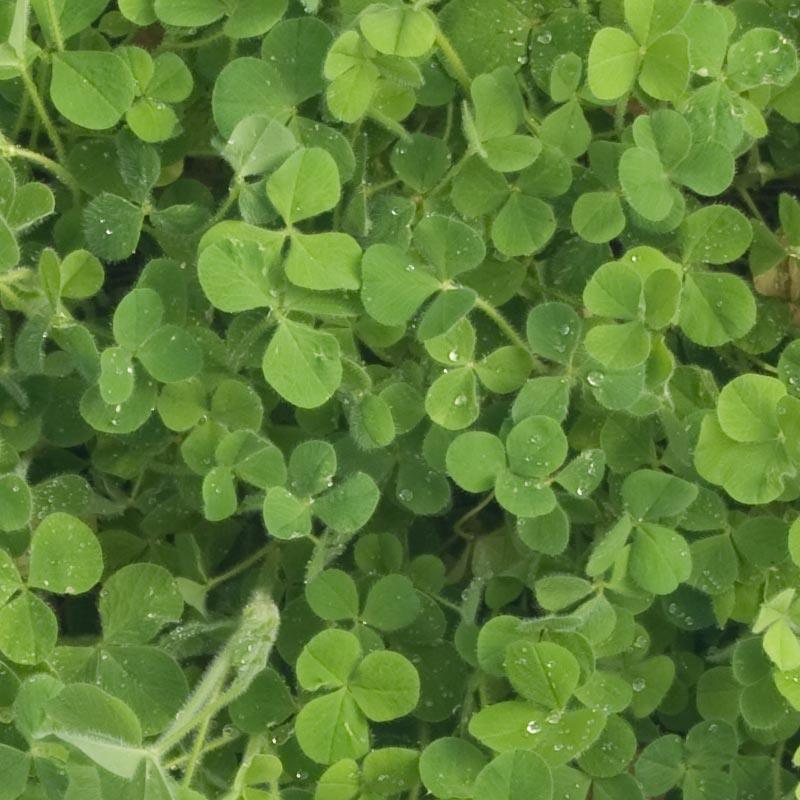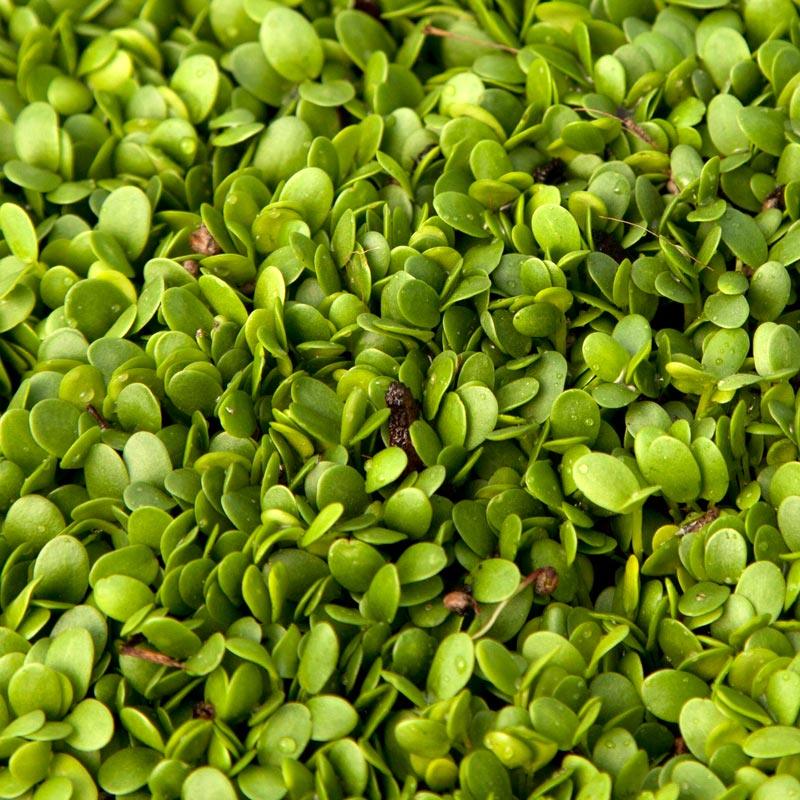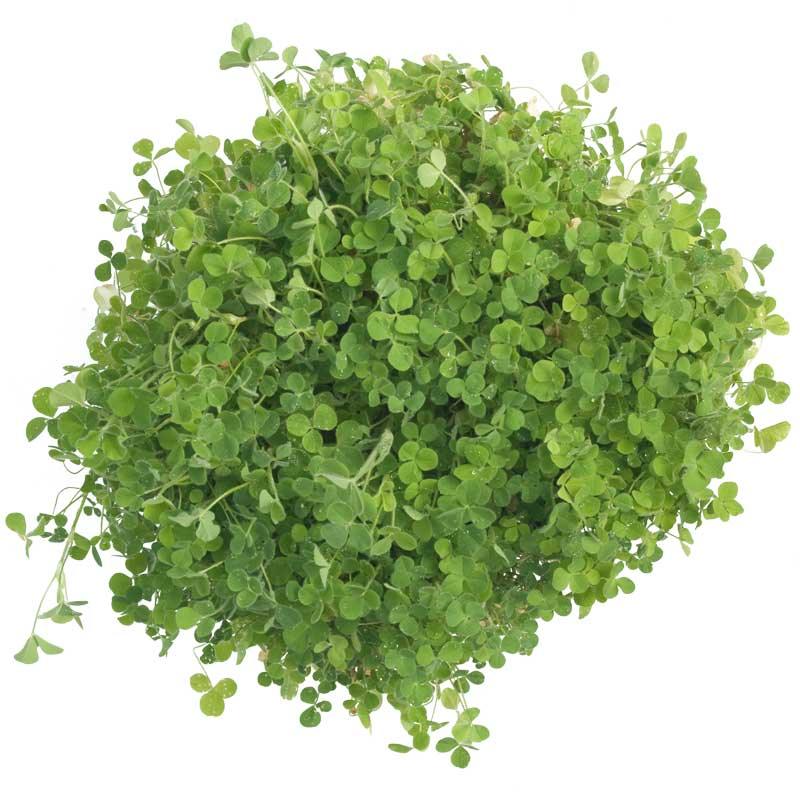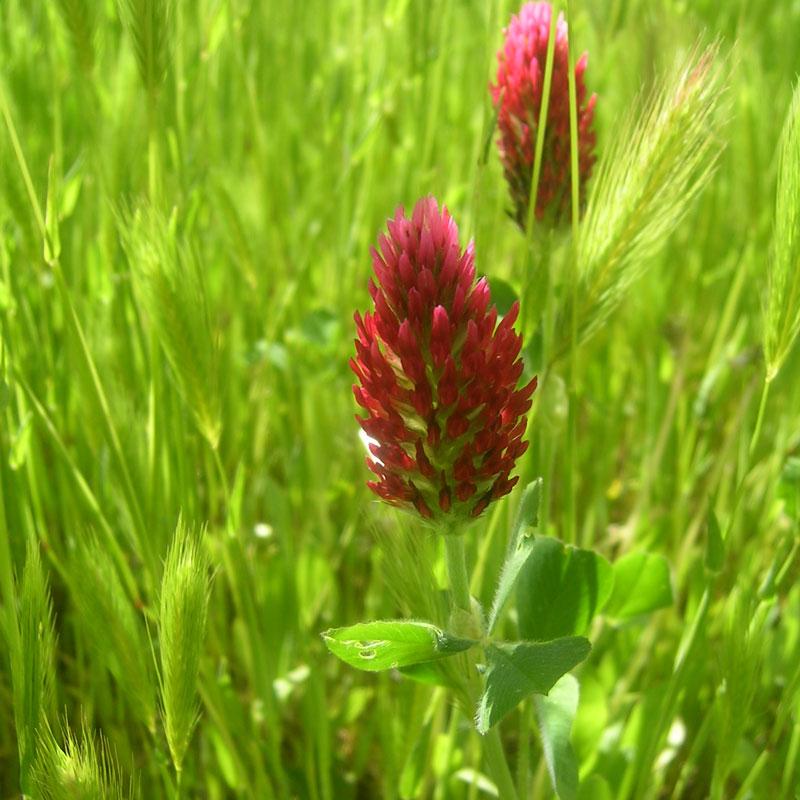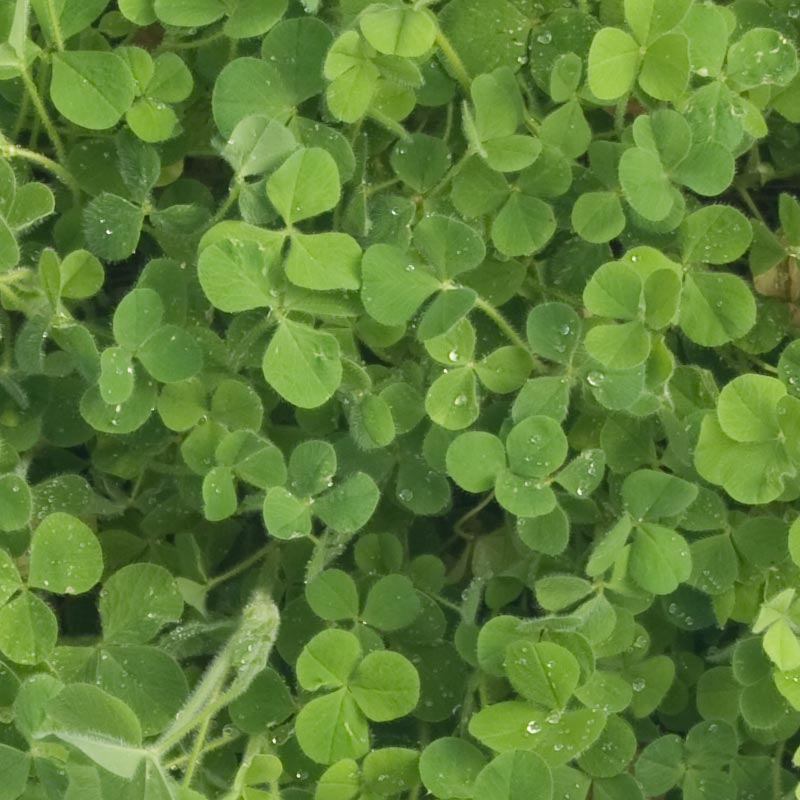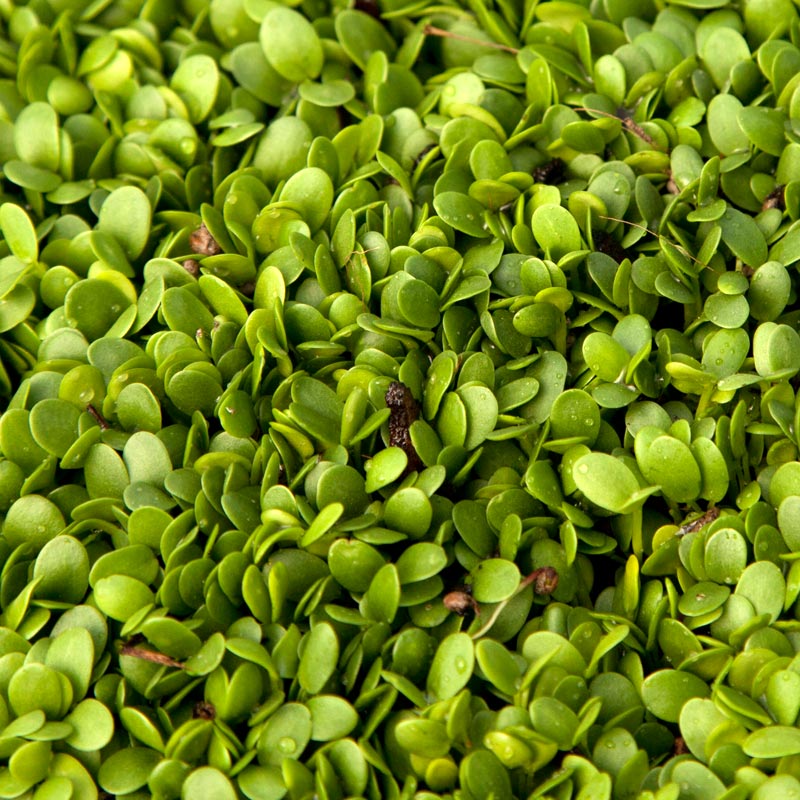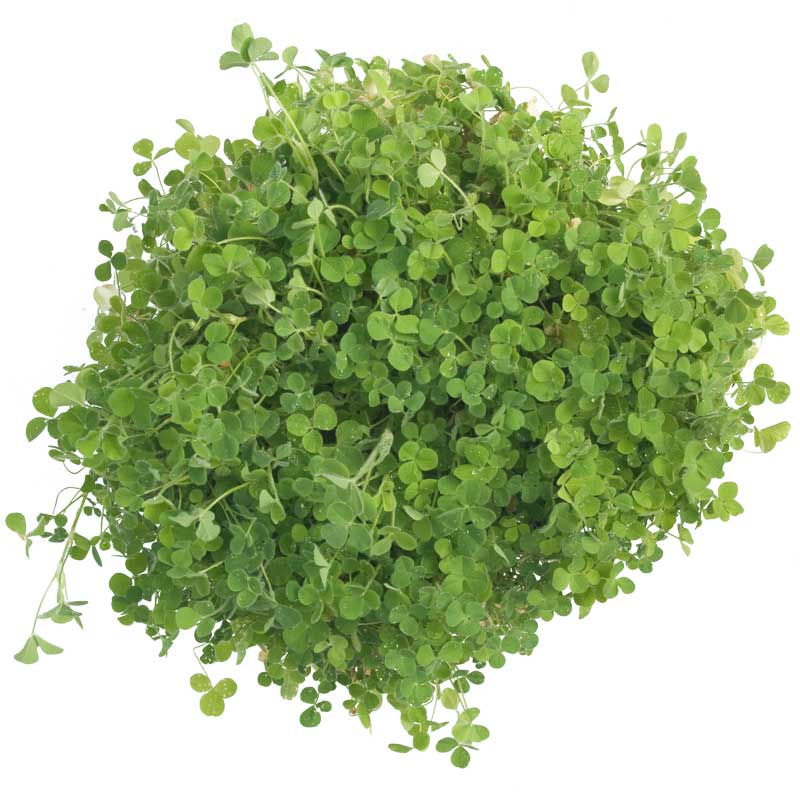Item Number: SCL310
Crimson Clover - Nitrocoated Seed (lb)
Crimson Clover - Nitrocoated Seed (lb)
Known for Its Beautiful Crimson Flowers
Trifolium incarnatum Annual cool season legume cover crop.
Showiest of all the clovers with bright crimson spikes. Annual crimson clover is often used in landscaping and erosion control for its beauty, cold and partial shade tolerance, and reseeding ability.
- Application Rate: 0.25-0.5" depth at 0.5-2 lb per 1,000 square feet or 20-40 lb per acre
- Inoculant: None needed, seed is nitrocoated
- Germination: 5-10 Days
- Plant Height: 18"
- Uses: Cover crop, erosion control, green manure, pastures, ground cover
- Facts to Note: Planted in the fall. Tolerates a minimum temperature of 10°F. This high quality crimson clover seed is good for pastures and can easily be overgrazed; animals love it. Fixes 80 lb of nitrogen (N) per acre, and is used as a cover crop in grain rather than row crop rotations, because it matures late.
See our guide for more information on distinctions between Red and Crimson Clovers.
Crimson clover, scientifically known as Trifolium incarnatum, is a popular and versatile cover crop that has earned its place in gardens and agricultural fields around the world. With its vibrant crimson blossoms and an array of benefits for soil health and garden ecosystems, crimson clover is a valuable addition to any sustainable gardening or farming practice.
Understanding Crimson Clover:
Crimson clover is an annual legume that belongs to the clover family, known for its trifoliate leaves and distinctive reddish-pink flower spikes. It is native to regions of Europe and Western Asia but has become widely cultivated in many temperate climates. Crimson clover serves as a dynamic and multifunctional cover crop with a range of benefits, making it a favored choice among gardeners and farmers.
The Benefits of Crimson Clover as a Cover Crop:
Nitrogen Fixation: One of the standout features of crimson clover is its ability to fix atmospheric nitrogen through a symbiotic relationship with nitrogen-fixing bacteria in its root nodules. This nitrogen-fixing capability enhances soil fertility by providing an essential nutrient for plant growth without the need for synthetic fertilizers.
Weed Suppression: The vigorous growth of crimson clover creates a dense canopy that shades the soil beneath, effectively suppressing weed germination and growth. This natural weed barrier reduces the competition for nutrients and resources among crops and unwanted plants.
Soil Erosion Control: Crimson clover's robust root system helps prevent soil erosion by stabilizing the soil structure. It reduces the risk of nutrient runoff and loss during heavy rainfall or irrigation.
Improvement of Soil Structure: As crimson clover grows, its roots enhance soil aeration and drainage. When the cover crop is eventually turned into the soil, it adds organic matter, contributing to improved soil structure and water retention.
Enhanced Biodiversity: Crimson clover's vibrant blooms attract a variety of pollinators, including bees and butterflies, which can benefit neighboring crops. This increased biodiversity supports a healthier garden ecosystem.
Planting and Care:
To maximize the benefits of crimson clover as a cover crop, follow these planting and care guidelines:
Timing: Sow crimson clover seeds in late summer to early fall or early spring, depending on your location and climate. This timing allows the cover crop to establish before the onset of harsh weather conditions.
Seed Rate: 0.25-0.5" depth at 0.5-2 lb per 1,000 square feet or 20-40 lb per acre. Adjust the rate according to the size of your planting area.
Seed Depth: Plant crimson clover seeds at a depth of approximately 1/4 to 1/2 inch in well-prepared soil. Ensure good seed-to-soil contact for optimal germination.
Soil Preparation: Prior to planting, prepare the soil by removing debris and weeds. It's advisable to perform a soil test to assess nutrient levels and pH, allowing you to make any necessary adjustments.
Incorporation: When it's time to terminate the cover crop, typically in early spring before it begins to set seed, you can incorporate it into the soil by mowing or tilling. Allow the plant material to decompose, enriching the soil.
Crimson clover, with its striking appearance and numerous benefits, serves as an exceptional cover crop for promoting soil health, biodiversity, and sustainable gardening and farming practices. Its nitrogen-fixing ability, weed-suppressing qualities, and soil-enhancing properties make it a valuable ally in nurturing robust and fertile soils. Incorporate crimson clover into your garden or agricultural rotation to experience the advantages of this dynamic cover crop firsthand. Explore our selection of crimson clover seeds.
Check Your Zone Compatibility:
Compatible with your zone.
Growing Zone for
,

Our Guarantee To You
Since 1976, we've served our customers at every stage of growing. Please contact us at any time. We are happy to support and assist you.
Description
Description
Trifolium incarnatum Annual cool season legume cover crop.
Showiest of all the clovers with bright crimson spikes. Annual crimson clover is often used in landscaping and erosion control for its beauty, cold and partial shade tolerance, and reseeding ability.
- Application Rate: 0.25-0.5" depth at 0.5-2 lb per 1,000 square feet or 20-40 lb per acre
- Inoculant: None needed, seed is nitrocoated
- Germination: 5-10 Days
- Plant Height: 18"
- Uses: Cover crop, erosion control, green manure, pastures, ground cover
- Facts to Note: Planted in the fall. Tolerates a minimum temperature of 10°F. This high quality crimson clover seed is good for pastures and can easily be overgrazed; animals love it. Fixes 80 lb of nitrogen (N) per acre, and is used as a cover crop in grain rather than row crop rotations, because it matures late.
See our guide for more information on distinctions between Red and Crimson Clovers.
Crimson clover, scientifically known as Trifolium incarnatum, is a popular and versatile cover crop that has earned its place in gardens and agricultural fields around the world. With its vibrant crimson blossoms and an array of benefits for soil health and garden ecosystems, crimson clover is a valuable addition to any sustainable gardening or farming practice.
Understanding Crimson Clover:
Crimson clover is an annual legume that belongs to the clover family, known for its trifoliate leaves and distinctive reddish-pink flower spikes. It is native to regions of Europe and Western Asia but has become widely cultivated in many temperate climates. Crimson clover serves as a dynamic and multifunctional cover crop with a range of benefits, making it a favored choice among gardeners and farmers.
The Benefits of Crimson Clover as a Cover Crop:
Nitrogen Fixation: One of the standout features of crimson clover is its ability to fix atmospheric nitrogen through a symbiotic relationship with nitrogen-fixing bacteria in its root nodules. This nitrogen-fixing capability enhances soil fertility by providing an essential nutrient for plant growth without the need for synthetic fertilizers.
Weed Suppression: The vigorous growth of crimson clover creates a dense canopy that shades the soil beneath, effectively suppressing weed germination and growth. This natural weed barrier reduces the competition for nutrients and resources among crops and unwanted plants.
Soil Erosion Control: Crimson clover's robust root system helps prevent soil erosion by stabilizing the soil structure. It reduces the risk of nutrient runoff and loss during heavy rainfall or irrigation.
Improvement of Soil Structure: As crimson clover grows, its roots enhance soil aeration and drainage. When the cover crop is eventually turned into the soil, it adds organic matter, contributing to improved soil structure and water retention.
Enhanced Biodiversity: Crimson clover's vibrant blooms attract a variety of pollinators, including bees and butterflies, which can benefit neighboring crops. This increased biodiversity supports a healthier garden ecosystem.
Planting and Care:
To maximize the benefits of crimson clover as a cover crop, follow these planting and care guidelines:
Timing: Sow crimson clover seeds in late summer to early fall or early spring, depending on your location and climate. This timing allows the cover crop to establish before the onset of harsh weather conditions.
Seed Rate: 0.25-0.5" depth at 0.5-2 lb per 1,000 square feet or 20-40 lb per acre. Adjust the rate according to the size of your planting area.
Seed Depth: Plant crimson clover seeds at a depth of approximately 1/4 to 1/2 inch in well-prepared soil. Ensure good seed-to-soil contact for optimal germination.
Soil Preparation: Prior to planting, prepare the soil by removing debris and weeds. It's advisable to perform a soil test to assess nutrient levels and pH, allowing you to make any necessary adjustments.
Incorporation: When it's time to terminate the cover crop, typically in early spring before it begins to set seed, you can incorporate it into the soil by mowing or tilling. Allow the plant material to decompose, enriching the soil.
Crimson clover, with its striking appearance and numerous benefits, serves as an exceptional cover crop for promoting soil health, biodiversity, and sustainable gardening and farming practices. Its nitrogen-fixing ability, weed-suppressing qualities, and soil-enhancing properties make it a valuable ally in nurturing robust and fertile soils. Incorporate crimson clover into your garden or agricultural rotation to experience the advantages of this dynamic cover crop firsthand. Explore our selection of crimson clover seeds.
Note to Certified Organic Growers: All our cover crop seed is untreated, non-GMO seed. This is conventional seed, but all seeds are coated with Nitro-Coat Organic, which is an OMRI listed coating. This coating uses all organic ingredients: the proper rhizobacteria, a Calcium Carbonate coating that is naturally water absorbing to speed seed germination, and an OMRI listed organic adhesive.
Shipping Information
Shipping Information
Shipping Weight: 1.1 lb
Dimensions: 8.0"L x 5.0"W x 1.5"H
Features
Features
- Adds Significant Organic Matter
- Attracts Bees/Butterflies
- Attracts Beneficial Insects
- Cold Hardy
- Down to 25°F
- Fixes Nitrogen
- Good for Forage/Hay
- Good for Weed Competition
- Helps Control Erosion
- Nitrocoated
- Provides Quick Growth
- Shade Tolerant
- Tolerates Mowing/Grazing
Characteristics
Characteristics
Use Instructions
Use Instructions
Useful Information
Useful Information
Guarantee
Guarantee
Share

